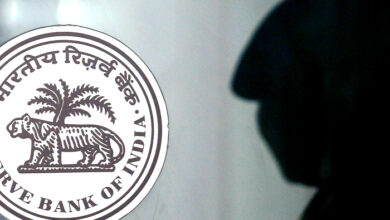Market Insights: Tech Giants, OPEC Meeting, and Economic Challenges

As we approach the midpoint of 2023, markets are abuzz with several pressing topics capturing investors’ attention. Let’s dive into the week ahead and explore these key areas, brought to you by Kevin Buckland in Tokyo, Ira Iosebashvili in New York, and Dhara Ranasinghe, Karin Strohecker, and Amanda Cooper in London.
- The Narrowest Rally This Century
Investors are increasingly expressing concerns over the S&P 500’s reliance on a handful of tech megacap stocks. The combined weight of Apple (NASDAQ:AAPL), Microsoft (NASDAQ:MSFT), Google-parent Alphabet (NASDAQ:GOOGL), Amazon (NASDAQ:AMZN), and Nvidia (NASDAQ:NVDA) now accounts for a staggering 25% of the S&P 500’s market value. This trend, fueled by the AI frenzy, has raised questions about the overall market’s stability and the potential for heightened volatility if investors decide to abandon these megacap holdings. Deutsche Bank (ETR:DBKGn) data reveals that the equal-weighted S&P 500 index, which serves as an indicator of the average stock, is trailing the S&P 500 by its largest margin since 1999.
- First In, First Out
Emerging market central banks took swift action in early 2021, tightening policies to counter rising inflation ahead of major developed central banks, including the Fed. Now, as rate cuts take center stage, these central banks are once again leading the way. Hungary took the initiative in May, becoming the first European bank to lower rates. Uruguay initiated the rate-cut cycle in Latin America in April, while Sri Lanka surprised the markets with a significant 250-basis point rate cut on June 1st. However, the rate outlook is mixed elsewhere. Polish policymakers are expected to maintain rates at 6.75% on Tuesday, although expectations for a future cut are rising. India’s next decision is due on Thursday, with a potential wait until 2024 for any changes. Russia, on the other hand, is likely to keep its rate steady at 7.5% on Friday.
- A Crude Invitation
Over the weekend, the Organization of the Petroleum Exporting Countries (OPEC) and its partners agreed to extend production cuts until 2024. This decision drew the attention of reporters from around the globe, who eagerly gathered at the OPEC secretariat, jostling for position at the bottom of the staircases that lead to the pre-meeting press scrum. The task of deciphering OPEC’s intentions was already complex, and Saudi Arabia, the group’s largest exporter, surprised the market by significantly reducing its own output. Saudi Energy Minister Prince Abdulaziz referred to this reduction as a “Saudi lollipop,” aiming to add an element of suspense to the proceedings. Adding to the anticipation, several major news organizations, including Reuters and Bloomberg, were banned from attending the press conference. Despite OPEC+’s efforts, the price of oil rose by as much as 3.4% overnight, reaching a high of $78.73 per barrel. However, the price remains roughly half of what it was in March 2022, following Russia’s invasion of Ukraine.
- Intervention Watch
The Japanese yen has experienced a decline of over 5% against a resilient US dollar since early March, reaching a six-month low. This has unsettled Japanese officials, leading top currency diplomat Masato Kanda to issue a warning that Japan will closely monitor currency movements and keep all options on the table. While currency intervention is currently viewed as unlikely, traders will undoubtedly pay close attention to comments from policymakers in the coming
days. A recent meeting between officials from the finance ministry, Bank of Japan (BOJ), and Japan’s financial watchdog could potentially serve as a precursor to further action. Meanwhile, Sweden’s crown has reached its weakest level against the dollar and euro in over a decade, exacerbating inflationary pressures. Although a weak currency poses challenges, central bank Deputy Governor Per Jansson asserts that intervention would be a measure of last resort.
- RBA Brings the Pain
The Reserve Bank of Australia (RBA) has cautioned that the battle against inflation is far from over, and the public should prepare for further difficulties. The upcoming RBA meeting on Tuesday could bring about another round of pain, with markets assigning a 30% probability to a rate hike. The Australian economy had shown signs of cooling until recently, when consumer prices for April surpassed expectations, leading to a two-month low for stocks. Following a surprise rate hike last month, which RBA Governor Philip Lowe justified as a means to send a clear message to households and businesses, rates are already at their highest level in 11 years. Policymakers must also keep a watchful eye on China, Australia’s top trading partner, where a sluggish post-pandemic recovery poses risks to Australian ore and energy exports.
As we progress through the week, these market dynamics will undoubtedly shape investor sentiment and market trajectories. Stay tuned for the latest updates.





